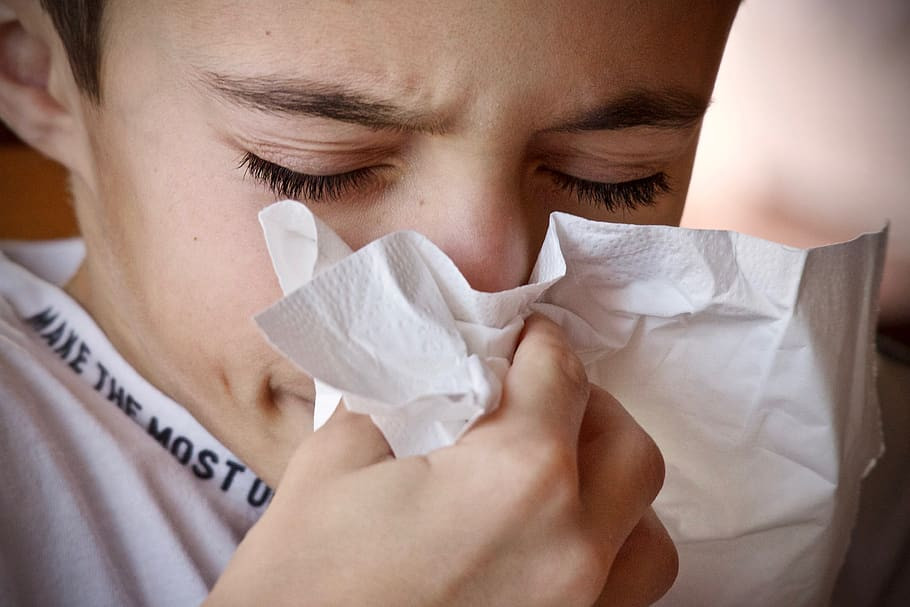
By Dr Dilip Abdul Khadar
Introduction
Common cold, flu, bronchitis, bronchial asthma turning worse and other respiratory ailments are seen more frequently in colder months. People are indoors more often, allowing viruses to pass more easily from one person to another being the most common reason besides the cold, dry air, which may further weaken the body’s resistance.
Middle of a rampant pandemic
In contrast to this we are currently in the middle of a rampant pandemic. It is so contagious that it has spread over the entire world infecting many, leaving many with permanent lung damage, causing an overall fatality rate of 2.3 percent1 in people infected with a critically ill form of COVID-19.
Expert physician can differentiate
In this article we will discuss the common ailments and viral infections which is seen and expected to surge during the cold season. They may look similar but clinically most of them could be differentiated by a seasoned physician. We may need radiological evidence or specific lab tests to confirm the diagnosis. A SARS COV-2 PCR test is only asked when the constellation of signs and symptoms and history fit wells into the clinical diagnosis of COVID-19 and you need a lab test to confirm and isolate. Below are the ailments faced commonly during the cold months of the year:

Common cold
The common cold2 is a mild form of infection caused by many groups of viruses. It is the most frequent acute illness all around the world especially during the cold seasons. The term ‘common cold’ refers to a mild upper respiratory viral infection, which manifests with nasal congestion and discharge, sneezing, sore throat, cough, fever, headache and malaise.
The symptoms of common cold in most people are self-limited, which means the infected recover by themselves over time. It may sometimes complicate with secondary bacterial infections like sinusitis or bronchitis. Symptomatic therapy remains the mainstay of treatment for common cold. Medications for fever, headache and body pain, topical and oral decongestants, saline nasal spray, cough syrups and antihistamines medications are mostly used to treat common cold and they respond well to it. The common cold is caused by viruses and antibiotics are only prescribed if there is an associated secondary bacterial infection. Vitamin C and warm food is often touted as a natural remedy for the common cold.
Seasonal allergies
They are a group of conditions that can cause a stuffy or runny nose, sneezing and itchy eyes. Seasonal allergies are sometimes called ‘hay fever’. Symptoms occur only at certain times of the year and they commonly surge during spring season. Most seasonal allergies are caused by pollens released from flowers of trees, grasses or weeds. Mold spores, which grow when the weather is humid, wet, or damp places such as the walls, bathroom doors or room ceilings also causes allergy. Normally, people breathe in these substances without a problem. When a person has a seasonal allergy, his or her immune system acts as if the substance is harmful to the body. This causes symptoms. Many people first get seasonal allergies when they are children or young adults. Seasonal allergies are lifelong, but symptoms can get better or worse over time3. Seasonal allergies sometimes run in families. The most common cause of seasonal allergies, which last all through the year are mostly pets or dust mites.
Seasonal allergy manifests as blocked or runny nose, or as recurrent sneeze. There can also be eye itching or red eyes or sore throat or itching of the throat or ears. People with seasonal allergies get their symptoms reduced by using the following treatments which includes nose rinses, antihistamines, steroid nasal spray, decongestants and allergy medications.
Bronchitis
Acute bronchitis is a common clinical condition characterised by an acute onset with persistent cough, with or without sputum production. It is typically self-limited, resolving within one to three weeks. Symptoms result from inflammation of the lower respiratory tract and are most frequently due to viral infection. It can be triggered by exposure to cold. It mostly involves the large airways (bronchi). Wheezing and mild breathlessness may accompany the cough. With prolonged coughing, chest wall or substernal musculoskeletal pain can occur. Treatment is mostly symptom control with use of cough syrups, mucolytics and antibiotics are offered if a secondary bacterial infection is suspected. Bronchitis can be also allergic. There is also an entity called as chronic bronchitis in smokers which presents with recurrent cough associated with large amounts of sputum especially during morning and it worsens after smoking. Viral bronchitis which prevails sometimes after a viral infection with persistent cough needs short term steroid inhalers for treatment and cough control.
Bronchial asthma
The ‘classic’ signs and symptoms of asthma are intermittent breathlessness, dry cough, and wheezing (high-pitched whistling sound, usually upon breathing out). It is a chronic inflammatory disorder of the airways. Asthma is diagnosed before the age of seven in approximately 75 percent of cases4. Asthma may develop at any age, although new-onset asthma is less frequent in older adults compared to other age groups. Asthma almost always involves a pattern of respiratory symptoms that occur following exposure to triggers such as an allergen, exercise, cold air or viral infection which leads to bronchospasm.
Asthma has a variant known as ‘cough variant asthma’ where the typical wheezing sound may be absent and may present with a persistent dry cough. Allergens that commonly trigger asthmatic symptoms include dust mites, molds, furry animals, cockroaches, and pollens. A strong family history of asthma and allergies or a personal history with atopic dermatitis (a condition that makes your skin red and itchy), seasonal allergic rhinitis (nose watering and itching with sneeze) and conjunctivitis (eye itching with redness or watering) favours a diagnosis of asthma in a patient with suggestive respiratory symptoms. Asthma can be diagnosed by clinical examination and confirmed by pulmonary function testing or by spirometry. Treatment of asthma is up titrated stepwise by using inhaled bronchodilators, inhaled steroids and other medications. An inhaled steroid use is safer and more preferred than oral steroid as it has a localised effect only and no systemic effect. Most patients do well with an inhaler when used regularly as advised by the treating physician.
Home nebuliser – wrong practice
Home nebuliser use is a common and wrong practice for all forms of asthma and cough. Home nebulisation is not required for all and reserved only for severe and uncontrolled forms of asthma in adults. Inhaler with spacer use is safer and more efficient in children and elderly. An oral or intravenous steroid similarly is preferred only in an uncontrolled and severe form of asthma. A well-controlled asthma does not appear to be a strong risk factor for acquiring COVID-19.
Influenza (flu) and COVID-19
The main difference between flu and COVID-19 are both contagious respiratory illnesses, but they are caused by different viruses. COVID-19 is caused by a new coronavirus (SARS-CoV-2) and flu is caused by influenza viruses. The main differences between flu and COVID-19 is that COVID-19 is more contagious, and it spreads faster and more easily than flu and, in some cases causes serious illnesses. COVID-19 also takes time before people show symptoms. People can further be contagious for longer with COVID-19 when compared to flu.
Best prevention is no exposure
The best way to prevent COVID-19 infection as of now is to avoid being exposed to the virus. What best works is maintaining a distance of at least two (2) meters between each other. Social distancing is the most powerful. By wearing a normal three-ply surgical mask with good fitting it offers more than 75 percent protection8, hand hygiene and taking a vaccine when available are other measures we should follow. For COVID-19 pandemic to stop spreading either 60-70 percent citizens of a country should fall ill and obtain immunity naturally or 60-70 percent of a country’s citizens should get vaccinated9.
Some key differences
The symptoms of flu and COVID-19 are similar, it may be hard to tell the difference between them based on symptoms alone, and testing may be needed to help confirm a diagnosis. Flu and COVID-19 share many characteristics, but there are some key differences between the two.
Common symptoms that COVID-19 and flu share include fever, chills, cough, breathlessness, headache, tiredness, body ache, sore throat, runny nose and even diarrhoea and vomiting.
Flu viruses can cause mild to severe illness, including common signs and symptoms listed above. It is important to note that not everyone with flu will have a fever5. Most people who get flu will recover in a week’s time, but some people will develop complications like pneumonia as a result of flu. Other possible serious complications triggered by flu can include inflammation of the heart, brain or muscle. Even healthy people can get sick with flu, but people 65 years and older are at higher risk. People with chronic medical conditions such as asthma, diabetes, kidney disease or heart disease are at more risk.
Serious illnesses in some
COVID-19 seems to cause more serious illnesses in some people. Change in or loss of taste or smell is seen in COVID-19 which is different from flu. Symptoms may appear two to 14 days after exposure to the virus. People with COVID-19 have had a wide range of symptoms which includes1 mild disease (with mild pneumonia or without) which was reported in 81 percent, severe disease (with less oxygen levels having >50 percent lung involvement on imaging within 24 to 48 hours) was reported in 14 percent, critical disease (with respiratory failure, shock, or multiorgan dysfunction) was reported in five (5) percent. COVID-19 deaths happen from the last group.
There are some key differences between flu and COVID-19. COVID-19 seems to spread more easily than flu and causes more serious illnesses in some people. It can also take longer before people show symptoms and people can be contagious for longer. Another important difference is that there is a time-tested annual vaccine available to protect against flu, in use for many years. The vaccines against COVID-19 are being tested. Some vaccines are found to be efficient, safe and awaiting FDA approval. Pfizer’s mRNA vaccine got approved for use in the United Kingdom by the end of this year (2020).
Both viruses will spread in fall and winter
It is likely that flu viruses and the virus that causes COVID-19 will both spread this fall and winter in countries with prominent seasons. Healthcare systems could be overwhelmed treating both patients with flu and patients with COVID-19. This means getting a flu vaccine during 2020-2021 is more important than ever. While getting flu vaccine will not protect against COVID-19, there are many important benefits. Flu vaccines which are annual vaccinations are easily available and have been shown to reduce the risk of flu illness and hospitalization. Flu vaccine has been shown to reduce the risk of having to go to the doctor with flu by around 60 percent.
Long haul symptoms reported
Worldwide long haul COVID symptoms6 (myalgic encephalomyelitis or chronic fatigue syndrome, shortness of breath, pain, chills, fever, cognitive problems, fluctuating blood pressure, fluctuating heart rate, psychiatric manifestations, increased sugar levels, protein leak in the urine7 etc ) is now reported, which persist even for months after a COVID infection. Long haul COVID symptoms are reported even after mild to moderate forms of COVID-19 infection. Post COVID sequelae where the lung gets fibrosed and permanently damaged after a severe COVID pneumonia are also vastly reported.
‘Not to catch’ COVID
These further stresses the need ‘NOT’ to catch COVID-19 infection in order to fall ill, be over with the pandemic and get immune. In a young, low-risk population who had COVID-19, almost 70 percent of individuals have impairment in one or more organs, four months after initial symptoms of COVID-19 infection7 in an ongoing study. It denotes how much essential it is to follow the advised precautions so as ‘not to catch’ this dreaded disease7. It echoes the importance to stay safe by all the known precautions advised to us like social distancing, hand washing, wearing a mask normally by covering the nose and mouth tightly and eagerly, hopefully and positively waiting safe to be vaccinated against COVID-19 in 2021.
Pneumonia or consolidation
Pneumonia is defined as an acute infection of the lung parenchyma in one lung or both. The triad of pneumonia is fever, cough and sputum. It can be acquired from the community commonly. Community-acquired pneumonia is the most common type of pneumonia. Pneumonia can be caused by bacteria, virus and by fungi in the immuno-compromised groups. It can involve a lobe or multiple lobes of the lung in one side. Lobar pneumonias are mostly bacterial. It can be bilateral (involving both the lungs) as in bronchopneumonia. Bilateral pneumonias are mostly caused by atypical bacteria or virus (H1N1, COVID-19 etc). COVID-19 pneumonias are mostly bilateral. Certain types of pneumonia especially viral pneumonias are contagious (spread from person to person). Viruses that cause pneumonia travel through the air in droplets of fluid after someone sneezes or coughs. These fluids can get into one’s body through one’s nose or mouth which again stresses the importance of wearing a mask in these pandemic times. Pneumonia is diagnosed clinically, by chest X-ray or when in doubt confirmed by a CT scans of chest. Pneumonias are treated with antibiotics or anti-viral agents according to the aetiology. Certain bacterial pneumonias require hospital admission and intra venous antibiotics. The severity of one’s case of pneumonia is dependent on the organism causing the pneumonia, one’s overall health, associated co-morbidities, and one’s age.
Conclusion
Similar symptoms and signs can be seen in a variety of diseases, which needs to be compared by a trained clinician in association with radiological and pathological investigations whenever possible. It is important to have a confirmed diagnosis of every case, as the treatment differs according to the diagnosis. A confirmed diagnosis further ensures a faster recovery.
References
1- Coronavirus disease 2019 (COVID-19): Clinical features Author: Kenneth McIntosh, MD,© Uptodate medicine, 2 – The common cold in adults: Treatment and prevention Authors: Daniel J Sexton, MD Micah T McClain, MD, PhD, 3 – https://www.uptodate.com/contents/seasonal-allergies-in-adults-the-basics, 4 – An overview of asthma management Author: Christopher H Fanta, MD, 5 – Seasonal influenza in adults: Transmission, clinical manifestations, and complications Author: Raphael Dolin, MD, 6 – https://www.washingtonpost.com/health/long-haul- covidpatients/2020/10/23/ab7c5324-0712-11eb-9be6-cf25fb429f1a_story.html, 7 – https://www.medrxiv.org/content/10.1101/2020.10.14.20212555v1.full.pdf, 8 – EricTopol-My interview with @DrPaulOffit- How do you rank masks, distancing and a vaccine for protection?-https://www.medscape.com/viewarticle/938494, 9 -https://www.bbc.com/news/health-5166549.
(Author: Dr Dilip Abdul Khadar, specialist physician (intensivist),
head of quality and patient safety, Aster Al Raffah Hospital, Muscat)

0 Comments